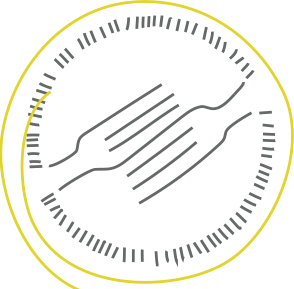Choosing Local F.I.S.H. | Fresh Indigenous Sustainable Healthy
After my book, What The Fork are You Eating was published, I recall someone boldly saying, “Gosh Stefanie, you know so much!” And to my readers, it may surely seem that way. However, the comment truly left an imprint. While writing the book and even after completing it, I regularly thought about how much I didn’t know and how much more I wanted to know.
In the book I touch on fish, from regulations (or lack thereof) to navigating purchasing, but there is just so much more to learn and explore. So, when the folks from Cornell Cooperative Extension (CCE) Marine Program approached me in the spring of 2020, during the height of the COVID-19 pandemic to collaborate on a project, I jumped at the opportunity.
This passionate group of scientists was determined to educate communities on how to source and cook with fresh, indigenous, sustainable, and health supportive seafood. As an FYI, choosing local is more important than ever right now— the pandemic has changed life as we know it. We all have been forced to alter how we shop, cook and eat so this has been and will continue to be an opportune time to increase awareness, interest and demand for locally caught fish and shellfish versus out-sourced species. Believe it or not, the vast majority of the seafood consumed in this country is imported, and part of that is fish that has actually been caught here but processed overseas. Yikes!
This project, funded by a USDA grant, was supposed to be centered around local seafood tastings at restaurants, fish market and farmers markets aimed at the general public as well and culinary and community-based organizations. But given the COVID climate, that couldn’t happen. So CCE Marine had to shift. Each person on the tireless team of five wears many hats and while most know their way around the kitchen, educating about cooking in front of a camera was outside their comfort zone. So that’s why they called on me!
To reach our goal of shooting eleven videos—Choose Local F.I.S.H Cooking Demos—we needed a plan including a location and videographer. However, with a limited budget and COVID conditions, obstacles abound. Using my home kitchen as our “studio”, and two i Phones (one operated by my then 14-year-old son and one rigged in a cabinet above my head for an overview shot) plus another camera for a front shot manned by Dan Kuehn of CCE Marine Program, we navigated what felt like a seemingly impossible task.
Throughout this project, with these admirable seafood scientists by my side, I learned so much I didn’t know about local and sustainable species. Some I have worked with for years including scallops, fluke and monkfish. Others were new to me like whiting, porgy, bluefish, dogfish, skate and sea robin. There was so much to take in, explore, learn and then translate to all of you in simple, nutritious and delicious terms. The recipes, which were all tested on seafood lovers and skeptics alike, are:
Blackened Whiting Tacos
Pan Fried Scallops
Long Island Chowder
Fluke in Foil
Grilled Coconut Curry Monkfish
Lime Cilantro Whole Roasted Fish
Striped Bass Ceviche
Bluefish Burgers
Dogfish Fry
S.A.L.T (Skate, Avocado, Lettuce and Tomato)
11. Reinvented Lobster Roll
Over the next few months, the videos will roll out and our hopes are that you will find them informational and entertaining plus inspiring! You can download each recipe, buy the ingredients, and then watch the corresponding video. Plus, I invite you to join me Wednesdays at 6pm for Come Cook with Me, a live Zoom cooking class from my kitchen to yours. I will be featuring one of the above recipes each month. This one-hour experience is totally informal and possibly transformative. Cost per household is $25 per class.
Let me leave you with this. Living on Long Island (or in any coastal community), we are surrounded by water and the finest seafood available. Our fisherman work hard to bring the freshest, highest quality seafood to our plates. Choosing local is important for so many reasons:
It is sustainably harvested
It is in compliance with U.S. and state regulations, which are some of the strictest in the world
It allows you to know the origin of your choices
Each purchase helps support the economic viability of fisherman, coastal fishing communities and businesses
To learn more about our Choose Local F.I.S.H. project, click here.

